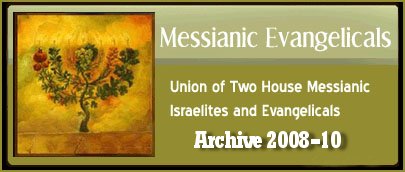RESOURCES
5-144000
A
B
C
D
E
F
G
H
I
J
K
L
M
N
O
P
Q
R
S
T
U
V
W
Y
Z
|
|

|
Beauty and the Beast: Dangerous Chemicals to Avoid
Posted by Lev/Christopher on December 24, 2009 at 2:12am
in Is That Kosher? Health and Wellness
by Vesta Elliot
Knowing what dangerous ingredients to look for is our only protection towards daily exposure to potential carcinogens.
Did you know that your skin absorbs approximately 60% of everything that it comes in contact with? As such, it only makes sense that we become aware of the chemicals that the beauty industry uses in cosmetics, hair care and personal care items. Many of these chemicals have been termed “mutagenic” (having the ability to damage the genes and chromosomes) in a paper by the Toxic Chemicals Laboratory of New York State College. For example, research from University of Nijmegen, Netherlands, showed almost 4% increased risk for birth defects in children of pregnant women exposed to conventional hair care products.
As stated in my previous article (Organic Beauty: The Cosmetic Cover-Up ~ November/December 2006), there are no FDA regulations on natural or organic cosmetics or personal care items. In fact, many harmful chemicals found in such products are not noticed by consumers simply because they are labeled as “natural” or “organic.”
Knowing what dangerous ingredients to look for is our only protection towards daily exposure to potential carcinogens. Here’s a primer:
Propylene Glycol ~ A petrochemical mix found in automatic brake fluid, hydraulic fluid, and industrial antifreeze. In cosmetics, Propylene Glycol works as a substance that retains moisture. Material Safety Data Sheets (MSDS) put out by the U.S. Occupational Safety and Hazards Association (OSHA) warn users to avoid skin contact with Propylene Glycol as it is a skin irritant that can cause liver abnormalities, kidney damage, allergic reactions, hives and eczema. [Some Propylene Glycol is now derived from corn sugar. However, if the corn is a U.S. product, it is 90% likely genetically modified. Genetically Modified Organisms (GMO) are self-replicating, pesticide tolerant crops deemed hazardous to our health, yet 75% of foods in U.S. grocery stores are now GMO. (See: www.SeedsofDeception.com)]
Sodium Lauryl (Laurel or Laureth) Sulfate (SLS or SLES) ~ Synthetic detergents and wetting agents used in garage floor cleaners, engine degreasers and auto products. SLS is known in the scientific community as a common skin irritant. It causes dryness of the scalp (similar to dandruff), and is rapidly absorbed by the skin, eyes, brain, heart and liver. It can retard healing, cause cataracts in adults and keep children’s eyes from developing properly. Both SLS and SLES cause potentially carcinogenic formations of nitrates and dioxins when reacting with other ingredients in shampoos and cleansers. Large amounts may enter the bloodstream with just one shampoo and may cause hair loss!
Diethanolamine (DEA), Tiethanolamine (TEA) and Monoethanolamine (MEA) ~ Synthetic, colorless liquids used as industrial solvents, emulsifiers and detergents, but also as humectants in personal care products. DEA, TEA and MEA irritate the skin and mucous membranes, and are considered carcinogenic.
Methyl, Propyl, Butyl and Ethyl Paraben ~ Synthetic ingredients used as inhibitors for microbial growth in order to extend shelf-life of products. Parabens are widely used even though they are known to be toxic and related to breast cancer (see www.thinkbeforeyoupink.org). Parabens also cause many allergic reactions and skin problems; they are highly toxic.
Dibutyl Phthalate (DBP) ~ Common ingredient in nail polish and also found in perfumes. DBP is a known carcinogen and reproductive endocrine disruptor to laboratory animals.
Toluene (Methyl benzene* or Phenylmethane) ~ A solvent used in paint thinners, turpentine, glue, dry cleaning, nail polish remover, nail polish and perfumes. It is highly flammable and a known carcinogen that can damage liver, kidneys and brain. (*Benzene, a derivative of gasoline, is a known carcinogen. Did you know Alaska is one of the few states in the U.S. that does not eliminate benzene from gasoline?)
Petrolatum (also known as Petroleum Jelly) ~ A petroleum derivative used as an emollient. Petrolatum can interfere with the body’s natural moisturizing mechanism, leading to dryness and chapping. It often causes the very problems that it claims to alleviate.
Diazolidinyl Urea and Imidazolidinyl Urea (Germal II, Germall 115) ~ Preservatives found to be a primary cause for contact dermatitis by the American Academy of Dermatology. Neither agent contains a good anti-fungal, so they are mixed with other preservatives. These chemicals release formaldehyde, a well known carcinogen.
PVP(VA Copolymer) ~ A petroleum-derived plasticizer used in hairsprays, styling aids, and other cosmetics. PVP is considered toxic since inhaling particles can damage the lungs.
Stearalkonium Chloride ~ Developed by the fabric industry as a fabric softener, it is cheaper and easier to use than proteins and herbs (which are beneficial) in hair conditioners and creams. This chemical causes allergic reactions and is toxic.
Synthetic Colors ~ Should be avoided at all costs. They are labeled as FD&C or D&C, followed by a color and number. (Example: FD&C No.6 or D&C No.6) Many synthetic colors are carcinogenic. If a cosmetic has them in it, don’t buy it.
Synthetic Fragrance ~ A mystery formula that may be composed of over 200 ingredients. There is no way to know what the exact chemicals are since the label will simply read “fragrance.” Problems caused by such chemicals include dizziness, headaches, rash, hyperpigmentation, violent cough, skin irritation, vomiting—and the list goes on.
Formaldehyde ~ A disinfectant used in embalming to temporarily cleanse and preserve, but also used in plastics, polymers and adhesives. Formaldehyde is a known carcinogen, yet is found in everything from paints, carpet, bedding and explosives to toothpaste, cosmetics and facial tissue.
Resorcinol (Benzenediol) ~ A known carcinogen in conventional hair colors and dyes. Derived from Benzene (see Toluene), it is also known as Dihydroxybenzene, Hydroxyphenol, Hydroquinone (a common ingredient in skin bleaching creams), and Hydroxycyclohexadien. It is used as an external disinfectant, antiseptic for psoriasis and eczema, and as an ingredient in anti-dandruff shampoo and sunscreen cosmetics.
Ammonia ~ Used in the production of fertilizers, explosives and polymers. It is a toxic and corrosive gas that is derived from natural gas (methane) or petroleum gas (butane and propane). Ammonia is common in tobacco to increase the rate at which nicotine is delivered to the bloodstream. It is highly toxic to aquatic animals, and used to grow nitrogenous-loving vegetables (like corn) without overturning the soil, which leads to poor soil quality. Ammonia is highly irritating to the eyes and respiratory tract.
Coal Tar ~ Used in adhesives, insecticides, and dyes for cosmetics and hair color. It is included in topical applications for psoriasis and dandruff, and a frequent source of allergic reactions. Coal tar also causes cancer in laboratory animals.
What Can I Do?
Educate yourself about environmental toxins. Talk with your friends about these issues. Let companies know your comments. Support Local Organics and Certified Organics. Working together, we can make organics affordable and widely available. Remember, supporting true organic, plant-based products help re-sustain a healthy planet. As always, packaging of anything you buy ends in landfills. Please recycle.
http://www.alaskawellness.com/PoisonsArchive.htm
|


This page was created on 5 May 2010
Updated on 5 May 2010
Copyright © 1987-2010 NCCG - All Rights Reserved
|
|


